- The Afterburn Podcast
- Posts
- F-35 Upgrades Stall | Tu-95s Intercepted | AGM-158 JASSM
F-35 Upgrades Stall | Tu-95s Intercepted | AGM-158 JASSM
Aviation and Defense Insight
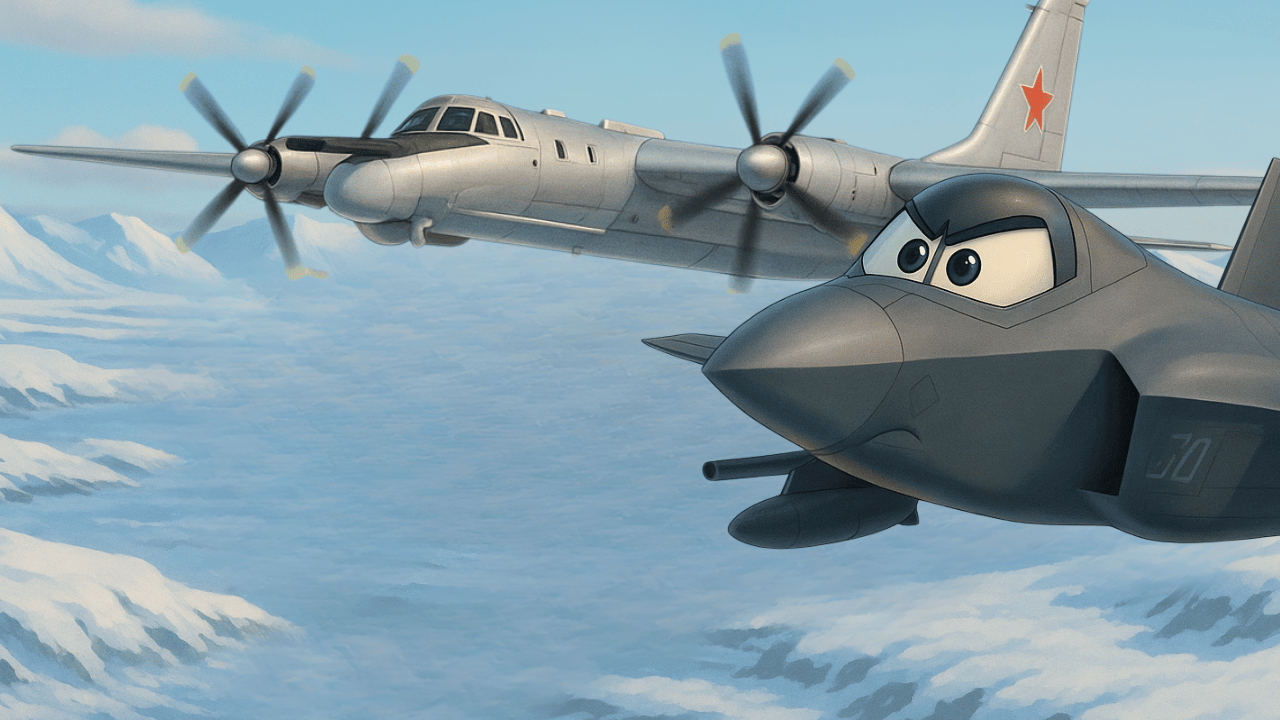
🎙️ Listen to The Lowdown on Apple Podcast, Spotify, or wherever you get your podcasts.
🔺The Afterburn Podcast is on YouTube - Check us out today 🔺
Forwarded this email? Sign up here
Edited by: Sidney McAlear
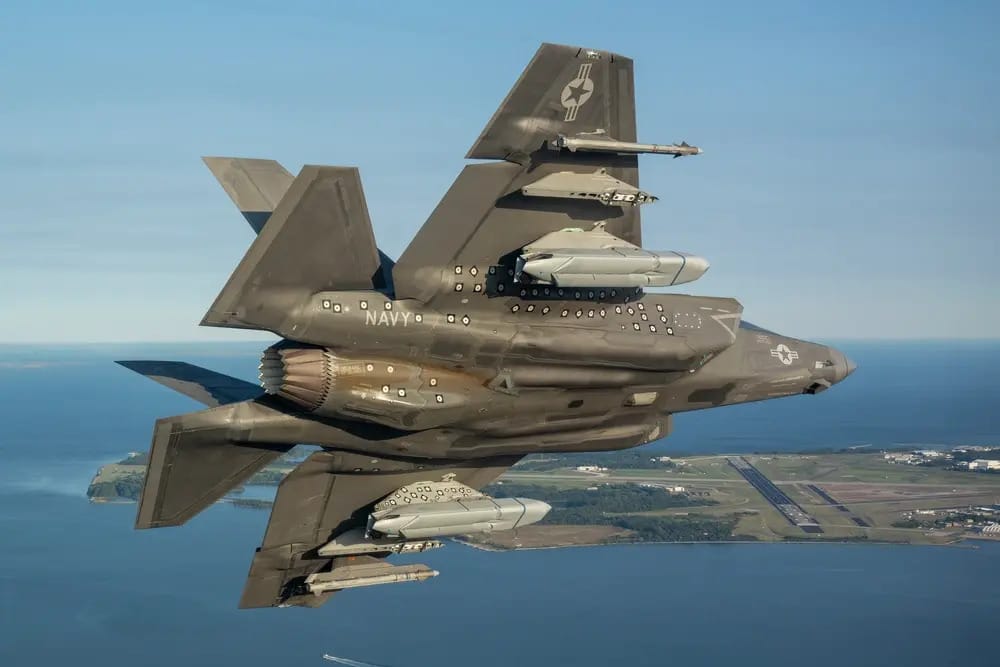
F-35 with AGM-158 Tests
See the Threat of Day Below for more on the AGM-158
FLIGHT LINE
🎯 The Bears are Back in Town: U.S. Intercepts Russian Warplanes
On July 22, 2025, U.S. Air Force fighters from the North American Aerospace Defense Command (NORAD) intercepted a Russian flight consisting of two Tu-95 Bear bombers and two Su-35 Flanker fighter jets near Alaska. The mission involved U.S. F-35s and F-16s along with a support aircraft, lasting over three hours. The Russian warplanes, which were operating in the Alaskan Air Defense Identification Zone (ADIZ), did not enter U.S. or Canadian sovereign airspace. This type of Russian activity is considered regular and non-threatening, echoing Cold War era encounters. The long-haul flight comes two months after Ukraine's spy agency launched a drone attack on Russian airfields, severely damaging at least six Tu-95s. (more)
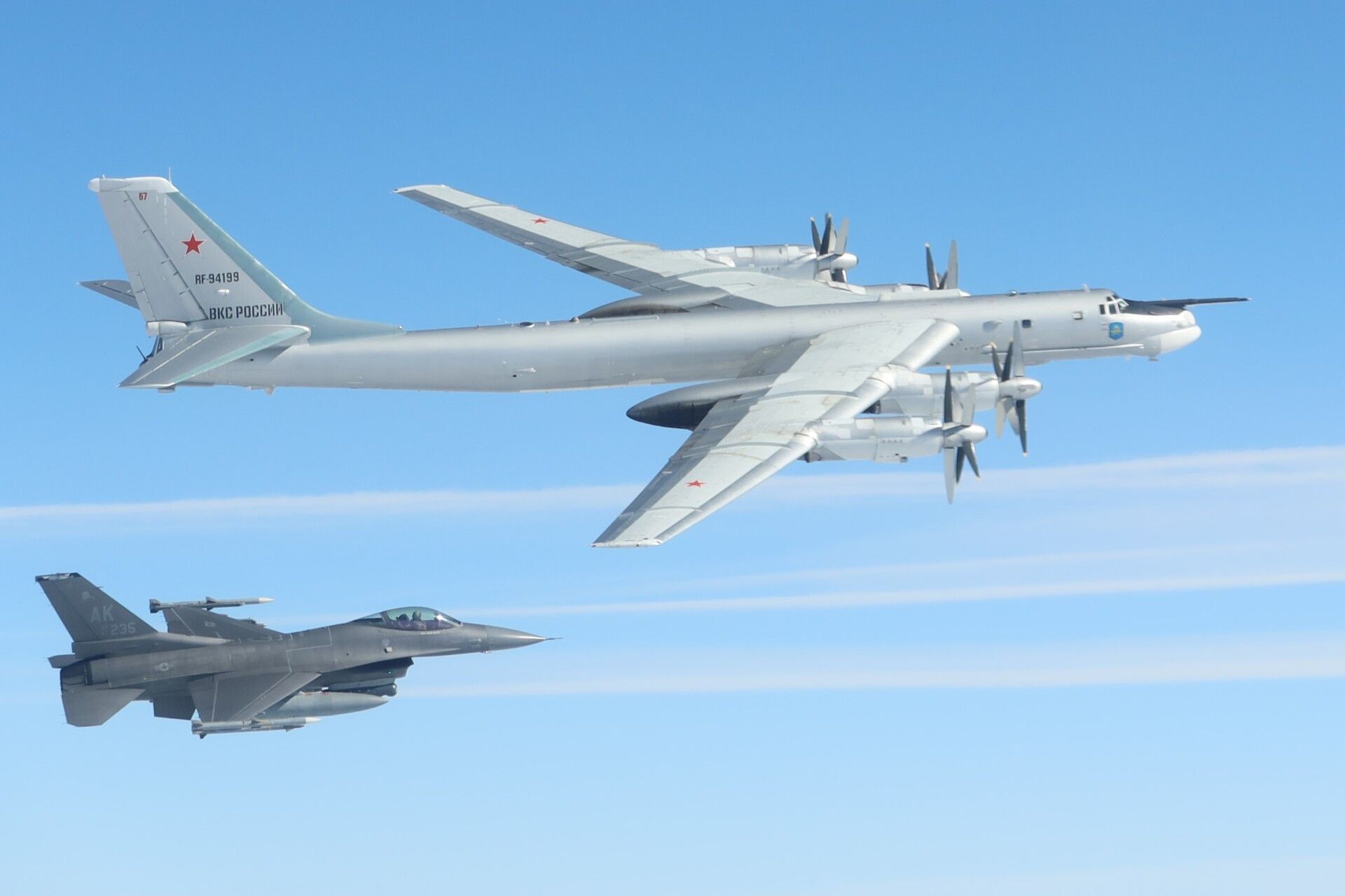
How many times were Russian military aircraft detected operating in the Alaska Air Defense Identification Zone (ADIZ) during 2024? |
🎯 F-35 Shopping on Hold Until Lockheed Fixes Upgrade Issues
The U.S. Air Force won't resume full purchases of the F-35 fighter jet until Lockheed Martin addresses issues with delayed upgrades. The decision is driven by new Department of Defense priorities and frustrations over delays, leading to a request for only 24 new jets, down from 44 purchased in 2025. The Air Force is insistent on receiving a fully capable Block 4 jet from the start, rather than jets that will need retrofitting. The full combat version of the TR-3 upgrade, crucial to Block 4, has been announced by Lockheed, but the F-35 Joint Program Office has yet to confirm or provide a timeline for formal approval. (more)
Along those lines….Lockheed has pitched a facelift for the F-35 in an ambitious pitch. Lockheed Martin CEO, Jim Taiclet, calls for a substantial "Ferrari" upgrade of the F-35 using technologies developed for the Next-Generation Air Dominance program, with the belief that this could bridge the gap to the emerging F-47. Despite Lockheed's recent $1.6 billion losses, largely attributed to a secret Skunk Works unit aeronautics program, Taiclet insists that the F-35 is "here to stay" due to its proven combat capabilities and strong international interest. (more)
🎯 Space Age Heist: Engineer Admits To Swiping Missile Secrets Worth Millions
A San Jose engineer, Chenguang Gong, recently pleaded guilty to stealing trade secrets related to advanced missile-detection technology. Gong smuggled over 3,600 files, including designs for infrared sensors and counter-infrared systems, many of which were proprietary, export-controlled, or for official use only. This technology was partially funded by the U.S. government and valued in the hundreds of millions. The theft occurred amidst Gong's involvement with Chinese government-backed "Talent Programs," further indicating interest in transferring U.S. defense-related research abroad. Gong now faces up to 10 years in federal prison for his actions. (more)

Chenguang Gong
🎯 Azure Skies Clear of Chinese Engineers for US Defense Support
Microsoft has revised its protocols to prevent Chinese engineers from providing technical support to US defense clients using the Azure cloud services. The move comes after concerns of national security and cybersecurity risks associated with the Defense Department's reliance on Microsoft's Chinese software engineers. This shift will affect the operations of Microsoft's Azure division, which generates more than 25% of the company's revenue. The change is in response to a report by ProPublica describing the potential vulnerabilities to cyberattacks from China due to "digital escorts" overseeing Microsoft's Chinese Azure engineers. (more)
🎯 NASA's X-59 Supersonic Jet Passes Taxi Test, Aims to Shush Sonic Booms
NASA's X-59 "quiet" supersonic jet, designed to fly faster than sound without generating disruptive sonic booms, has completed preliminary taxi tests at the U.S. Air Force's Plant 42 facility in Palmdale, California. The tests were conducted to ensure the jet's steering and braking systems function correctly. Lockheed Martin, the aircraft's developer, and NASA will next perform high-speed taxi tests in preparation for takeoff. The X-59's ultimate goal is to help reinstate commercial supersonic flight in the U.S., which has been prohibited for decades due to the noise disruption caused by sonic booms. Its success could significantly reduce flight times for civilian travel and other applications. (more)
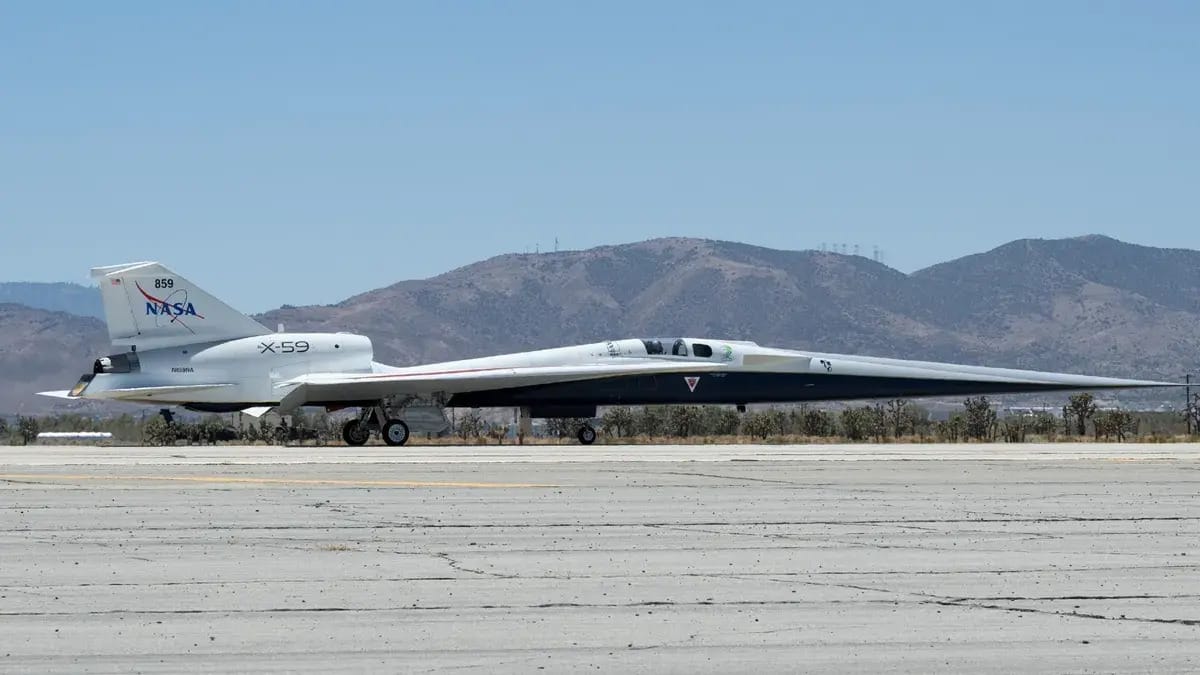
X-59
🎯 The AIM-120 AMRAAM Missile Gets a High-Tech Refurbishment
The AIM-120 AMRAAM (Advanced Medium Range Air-to-Air Missile) has served for over three decades and is now set to receive a significant upgrade. The new versions of the missile, namely the AIM-120-D3 and the AIM-120E, are vastly different from their counterparts. The updated missile versions will feature a two-way data link for long-range third-party targeting, potentially exceeding the reach of the launching fighter's radar arrays. Raytheon envisions a future where AMRAAMs are used for relatively long-range engagements at a lower cost, with AIM-260s used for higher-end engagements. The Air Force is requesting $665.1 million in 2026 to purchase 483 new AMRAAMs. (more)
The Chinese People’s Liberation Army Navy has ushered in a new era of aviation with the induction of the J-35 stealth fighter jets into service. Developed by the Shenyang Aircraft Corporation, these fifth-generation fighters are expected to perform land and future carrier operations. This marks a significant upgrade from the Navy's previous J-20 fighters. The J-35 is seen as a lighter counterpart to the J-20, with lower development costs due to shared technologies. The addition of these stealth fighters is set to widen the gap between China and the rest of the world in terms of stealth fighter production. (more)
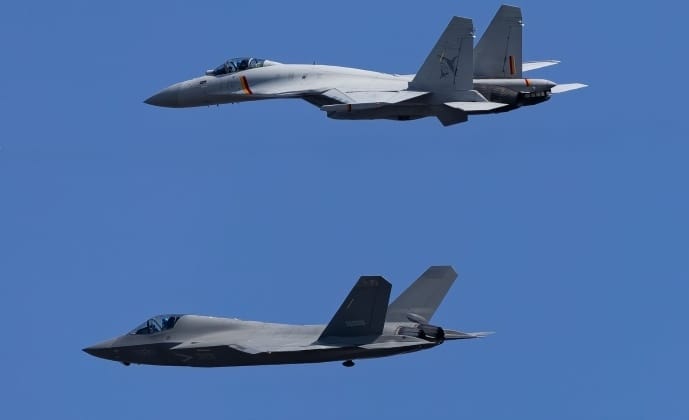
🎯 Belgium Breaks the Bank on Defense: F-35s, Frigates, and Anti-Air Systems on the Shopping List
Belgium is stepping up its defense game with a strategic plan that involves a hefty investment in F-35 fighters, frigates, and billions in air defense. The plan is the country's response to decades of being one of NATO’s lowest defense spenders. Belgium’s defense budget will increase to 2% of GDP, amounting to €12.8 billion (US$14.9 billion) in 2025, a significant increase from the estimated 1.29% allocated in 2024. The country will order an additional 11 F-35 fighters, buy 10 NASAMS systems for ground-based missile defense, and purchase a third anti-submarine warfare frigate. The spending spree aims to bolster Belgium's military capabilities and restore its diplomatic credibility. (more)
SNAPSHOT
➤ Senate has given the green light for Lohmeier to serve as the 29th under-secretary of the Air Force.
➤ The 510th Expeditionary Fighter Squadron, based at Aviano Air Base, Italy, has returned from a deployment to the Central Command area of responsibility. The squadron, known as the Buzzards, broke records, flying 8,800 hours and 1,400 sorties Nine of their pilots earned Single-Event Air Medals, while two received the Distinguished Flying Cross.
➤ BlackRock, the world's largest asset manager, has imposed restrictions on the use of company-issued devices for staff visiting China. Employees are advised to use temporary loaner phones and are prohibited from using company laptops or accessing the BlackRock network during personal travel in the country.
➤ Turkey is on the verge of finalizing a $5.6 billion deal to acquire 40 new Eurofighter Typhoon jets from a consortium that includes Germany, the United Kingdom, Italy, and Spain. This purchase is part of Turkey's efforts to bolster its Air Force capabilities.
➤ Italy, long a stalwart of NATO, is set to bolster its electronic warfare capabilities with the acquisition of two EA-37B Compass Call electronic attack aircraft. The deal, worth $300 million, was recently signed following approval by the U.S. State Department in 2024.
THREAT OF THE DAY (TOD)
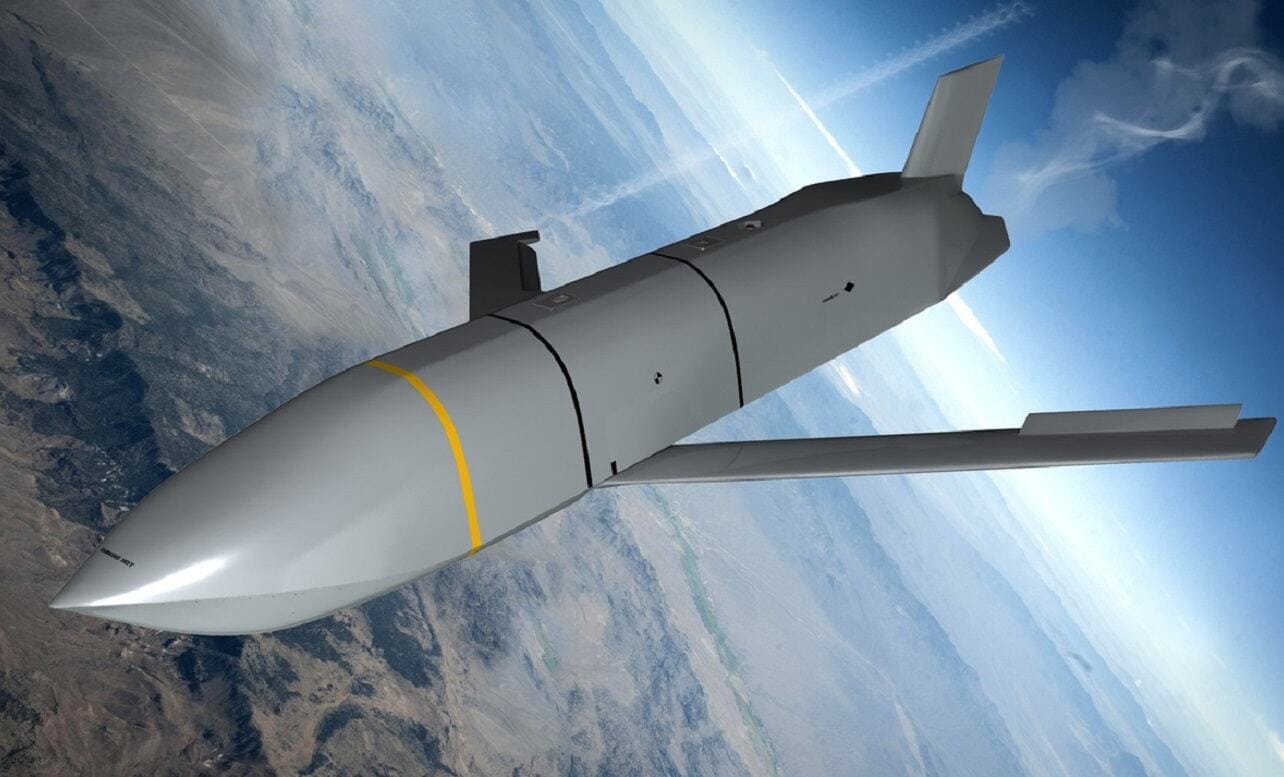
AGM-158
Threat: AGM-158 Joint Air-to-Surface Standoff Missile (JASSM)
Country of Origin: USA
Initial Operational Capability: 2009
Primary Role: Precision, long-range, stealthy air-to-ground cruise missile

F-15E with AGM-158 markings
Variants
🔺 AGM-158A JASSM – Baseline variant, subsonic, stealth features, in service since 2009
🔺 AGM-158B JASSM-ER – Extended-Range variant (in service since 2014), with a more efficient turbofan engine and over twice the range of the original
🔺 AGM-158B-2/B-3 – Upgraded ER models with enhanced GPS, new missile control unit, and improved survivability (B-3 to include military-grade “M-Code” GPS)
🔺 AGM-158C LRASM – Long Range Anti-Ship Missile, optimized for maritime targets, with advanced seeker and networking capability, deployed since 2018.
🔺 AGM-158D JASSM-XR – Extreme-Range variant, debuting 2024, with range up to 1,000 miles (1,800km), larger fuel load, advanced data links, and modular warhead.
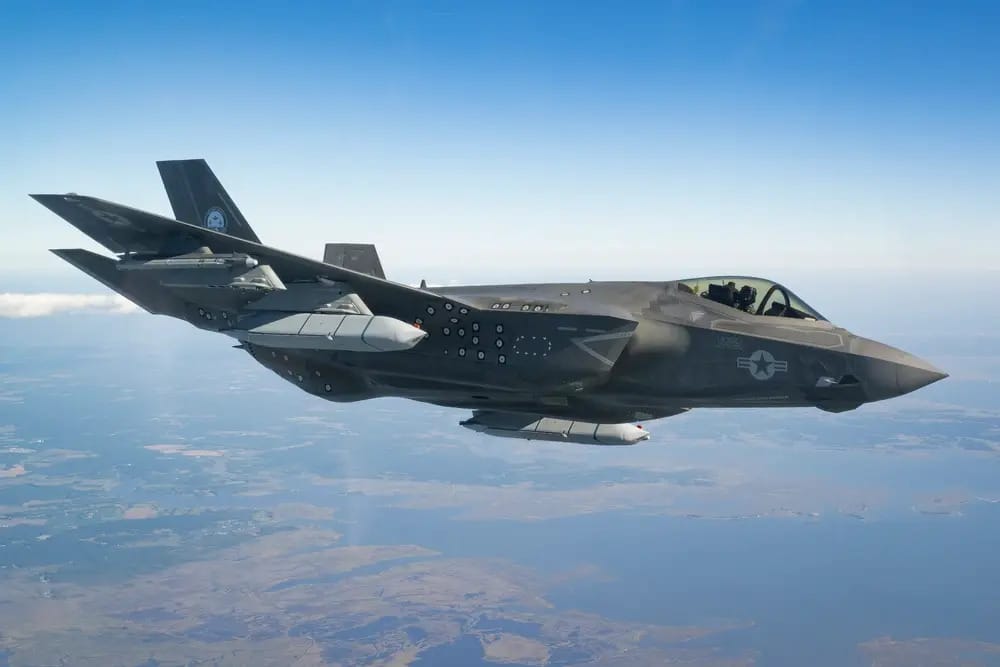
F-35 during AGM-158 testing
Speed: Subsonic (approx. Mach 0.7)
Range:
🔺 JASSM-A: ~230 miles (370km)
🔺 JASSM-ER: ~575–620 miles (925–1,000km)
🔺 JASSM-XR: Up to 1,000 miles (1,800km)
Warhead: 1,000lb (450kg) class penetrator/blast-fragmentation (WDU-42/B) for defeating hardened, high-value targets.
Propulsion
Baseline: Teledyne CAE J402-CA-100 turbojet (AGM-158A)
Extended Range: Williams F107-WR-105 turbofan (AGM-158B/ER and derivatives)
Armament
Single high-precision warhead (typically 1,000lb class)
Modular payloads possible in future variants
Guidance & Survivability
Inertial navigation system (INS) with GPS guidance
Imaging Infrared (IIR) seeker for terminal guidance
Advanced jam-resistant GPS receivers (newer variants)
Stealthy airframe to penetrate contested environments
Data link and retargeting capability (JASSM-XR and future upgrades)
Platforms
Strategic Bombers: B-1B Lancer (24x), B-2 Spirit (16x), B-52H Stratofortress
Fighter Aircraft: F-15E, F-16, F/A-18, F-35 (external only), others
Maritime: LRASM variant deployable from F/A-18E/F Super Hornet, B-1B, and soon F-35 and P-8
Rapid Dragon: Palletized launch from C-130/C-17 transport aircraft
Answer: B) Around 25 times. NORAD reported roughly 25 Russian aircraft detections in the Alaska ADIZ in 2024

Reply